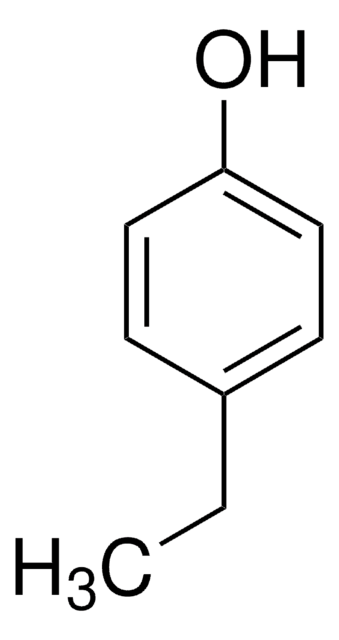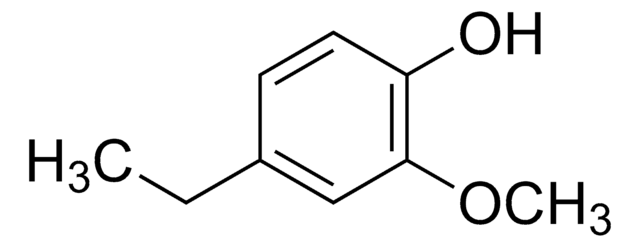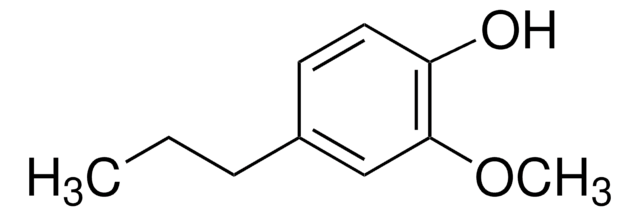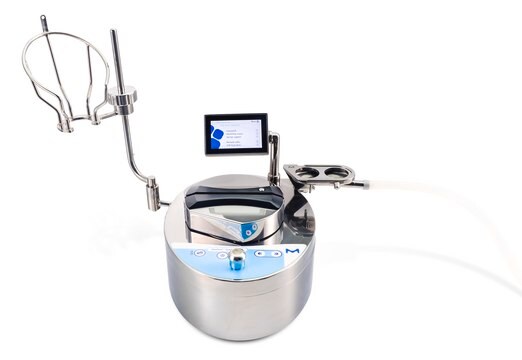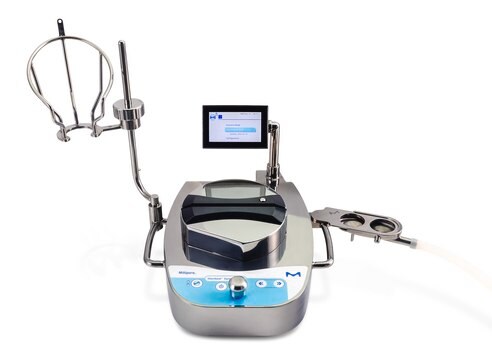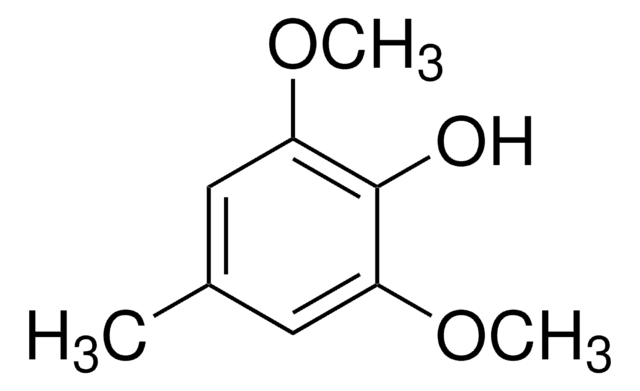Wichtige Dokumente
W243604
4-Ethylguaiacol
≥98%, FCC, FG
Synonym(e):
4-Ethyl-2-methoxyphenol, NSC 82313
About This Item
Empfohlene Produkte
Biologische Quelle
synthetic
Qualitätsniveau
Qualität
FG
Fragrance grade
Halal
Kosher
Agentur
follows IFRA guidelines
meets purity specifications of JECFA
Einhaltung gesetzlicher Vorschriften
EU Regulation 1223/2009
EU Regulation 1334/2008 & 178/2002
FCC
FDA 21 CFR 117
FDA 21 CFR 172.515
Assay
≥98%
Brechungsindex
n20/D 1.528 (lit.)
bp
234-236 °C (lit.)
mp (Schmelzpunkt)
15 °C (lit.)
Dichte
1.063 g/mL at 25 °C (lit.)
Anwendung(en)
flavors and fragrances
Dokumentation
see Safety & Documentation for available documents
Nahrungsmittelallergen
no known allergens
Allergener Duftstoff
no known allergens
Organoleptisch
bacon; clove; leather; smoky; spicy
SMILES String
CCc1ccc(O)c(OC)c1
InChI
1S/C9H12O2/c1-3-7-4-5-8(10)9(6-7)11-2/h4-6,10H,3H2,1-2H3
InChIKey
CHWNEIVBYREQRF-UHFFFAOYSA-N
Suchen Sie nach ähnlichen Produkten? Aufrufen Leitfaden zum Produktvergleich
Allgemeine Beschreibung
Anwendung
- Co-culture fermentation by Saccharomycopsis fibuligera and lactic acid bacteria improves bioactivity and aroma profile of wheat bran and the bran-containing Chinese steamed bread.: In dieser Studie werden der Einfluss der Kokultur-Fermentation auf die Bioaktivität und das Aroma von Weizenkleie untersucht, wobei der Schwerpunkt auf dem Beitrag von 4-Ethylguajacol zur Geschmacksverbesserung in der Lebensmittelverarbeitung liegt. Dabei wird das Potenzial zur Verbesserung der Nährstoff- und sensorischen Qualität von Backwaren hervorgehoben (Tang et al., 2024).
Verpackung
Signalwort
Warning
H-Sätze
Gefahreneinstufungen
Eye Irrit. 2 - Skin Irrit. 2 - STOT SE 3
Zielorgane
Respiratory system
Lagerklassenschlüssel
10 - Combustible liquids
WGK
WGK 2
Flammpunkt (°F)
226.4 °F - closed cup
Flammpunkt (°C)
108 °C - closed cup
Persönliche Schutzausrüstung
Eyeshields, Gloves, type ABEK (EN14387) respirator filter
Hier finden Sie alle aktuellen Versionen:
Besitzen Sie dieses Produkt bereits?
In der Dokumentenbibliothek finden Sie die Dokumentation zu den Produkten, die Sie kürzlich erworben haben.
Kunden haben sich ebenfalls angesehen
Unser Team von Wissenschaftlern verfügt über Erfahrung in allen Forschungsbereichen einschließlich Life Science, Materialwissenschaften, chemischer Synthese, Chromatographie, Analytik und vielen mehr..
Setzen Sie sich mit dem technischen Dienst in Verbindung.